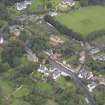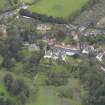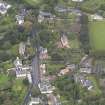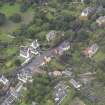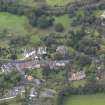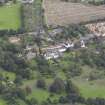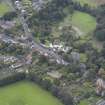Inveresk, 22 Inveresk Village Road, Halkerston
House (17th Century)
Site Name Inveresk, 22 Inveresk Village Road, Halkerston
Classification House (17th Century)
Alternative Name(s) Musselburgh
Canmore ID 53813
Site Number NT37SW 163
NGR NT 34850 71868
Datum OSGB36 - NGR
Permalink http://canmore.org.uk/site/53813
- Council East Lothian
- Parish Inveresk (East Lothian)
- Former Region Lothian
- Former District East Lothian
- Former County Midlothian
NT37SW 163 3485 7186.
NT37SW 163.01 34867 71876 Stable
Owner: Major L.P. Haviland
An unusual house of the late 17th century, square on plan and with a pyramidal roof.
D MacGibbon and T Ross 1889; RCAHMS 1929; C McWilliam 1978
Field Visit (18 February 1921)
Halkerston.
Adjoining Inveresk Lodge is Halkerston, a small but very interesting house of the same period as the extension of the Lodge- that is, about the last decade of the 17th century - and probably by the same builder. The plan is a square, 44 1/3 feet by 43 feet 10 inches, and towards the street the house has an elevation including ground floor, an attic, and a garret, while in rear there is a vaulted "laich" floor. The walls are harled, but the front has been subsequently cemented. The voids have dressed and back-set margins which are chamfered at the arrises. The very distinctive character of this house is due partly to its plan but principally to its great pyramidal roof of timber covered with small blue slates, which rises from the relatively low eaves to a central chimney at the apex; the lateral walls are surmounted by great chimney-stalks in four stages. The eaves-line, as on the neighbouring house, is broken by dormers at front and rear. The stair, a turnpike, has no external projection and lies within the house, but when it rises above the roof it is contained within a gabled and crowstepped tower. From the stair-foot a straight flight leads down to the "laich" floor and probably formed the only access, for the present south entrance is most probably a transformed window. The main entrance faces the street. The two cellars comprising the "laich" floor are respectively the kitchen and the well-room. The former has in the north gable a wide fireplace with segmental arch; beside this, in the adjacent window-sole, was until recently a stone sink or slop outlet. The well has been filled in, but its circular outline can just be traced on the earth floor. The cellars are ceiled with barrel-vaults of stone springing from north to south, which, where the plaster has been stripped, are seen to be formed in squared rubble in a surprisingly fresh condition; from floor to springing, on the other hand, the walls are of inferior masonry and are perhaps of earlier date. On the ground and attic floor there have been four apartments, while above there were two garrets. These rooms are modernised, but the two east attics retain panel stiles and rails in painted pine, while the simply moulded plaster cornices are contemporary.
HISTORICAL NOTE. In 1629 James Dundas of Arniston was served heir in the lands of Halkerston, and in 1680 Robert Dundas heir to James in the same lands.- Inquis. Spec., Edinburgh, Nos. 630, 1259.
RCAHMS 1929, visited 18 February 1921
OS map: Edinburgh iv S.E. (unnoted).
Photographic Survey (May 1960 - February 1961)
Photographic survey by the Scottish National Buildings Record/Ministry of Work in may 1960 and February 1961.






















